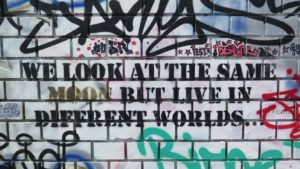Belgian private security sector #9: Historical facts (3/3)
This ninth chapter focusses on historical drivers (3/3). We will focus on the third step, according to Richard A. K. Lum, « 4 steps to the future »:
What are the causes of these changes? Which category do they belong to? Is there a leading category? Can we deduct a pattern?
This series of publications are extracted from my final paper written within the frame of university certificate on foresight (UCL – Sept 2018)

Causes of changes - Categories
The third step is to identify the causes of these changes or historical drivers.
Historical drivers can be classified into 4 categories
Scientific or technological advancements

Discoveries or tools that have resulted in significant change
Conflict or competition
Political or ideological battles, between states and/or citizens, competition between companies leading to a change in marketing dynamics

New ideas and values

New ideas, philosophies, or concepts that drive and shape change
Chance
Natural disasters, accidents, crises or any other unpredictable event triggering changes in values and attitudes, policies or market structure

Are some drivers dominant, do most of them belong to the same category?
Are we witnessing an established and repetitive or random pattern?
Causes of changes – Application to the security sector
Types | Drivers |
|---|---|
Scientific or technological advancements | Mechanization Use of oil Automotive Electric Lighting Use of social networks |
Conflict or competition | Proliferation in the "guarding" sector Prevailing conflicts in the world War of (dis-) information |
New ideas and values | Consumerism Urbanization Expansion of commercial and industrial sites New forms of crime Indoctrination via social networks Loss of confidence in the police (2) Predominant sense of insecurity (3) Bad reputation of private security (2) Radicalization in prison Appearance of lone wolves " Returnees " |
Chance | Emergence of dictatorships Threats and aggressions towards neighboring countries Rise of Fascism Rise of terrorism Rise of radical Islamism ð Various and multiple extremes (3) (Cyber)terrorist acts |
Other (economic and political) | Economic downturn Change in threat level Increasing threat level of nuclear power plants Fiscal austerity Need for the Public Service to Refocus on its Core Business Assignment of public tasks to the private sector |
With regard to the predominant feeling of insecurity, we refer to Thomas’ theorem: « the behavior of individuals can be explained, not by the reality they are confronted with, but by their perception of it. « If men define situations as real, they are real in their consequences »**.
Sources, Useful links & Resources
* Richard A. K. Lum, « 4 steps to the future »
** François Bourse
Executive Master in Foresight – UCL – 2018